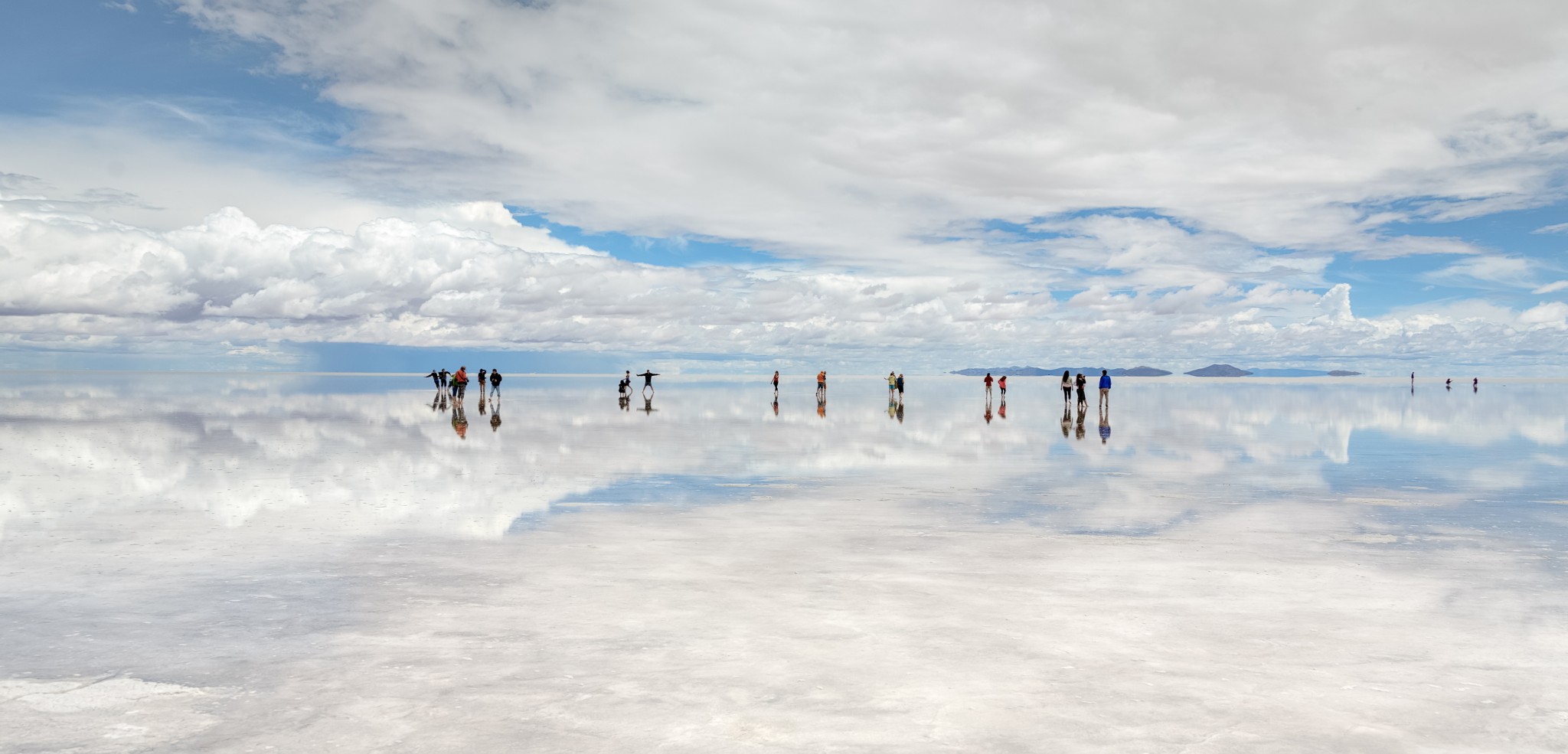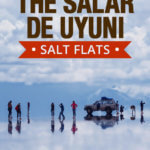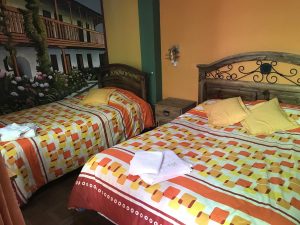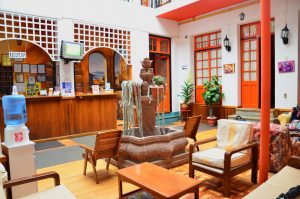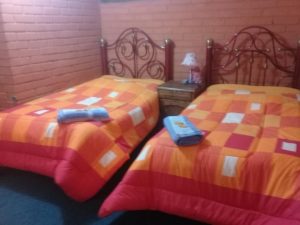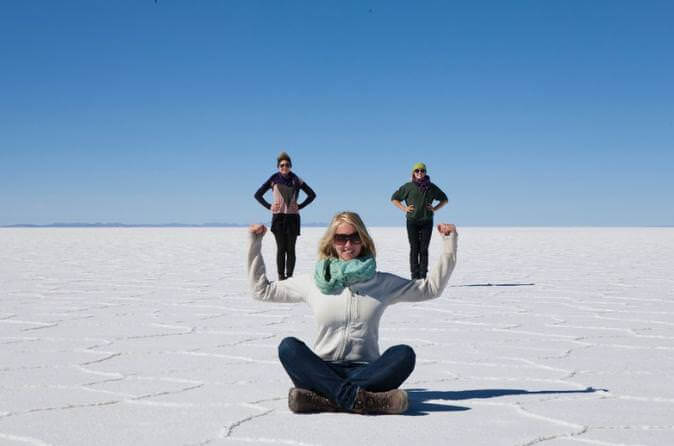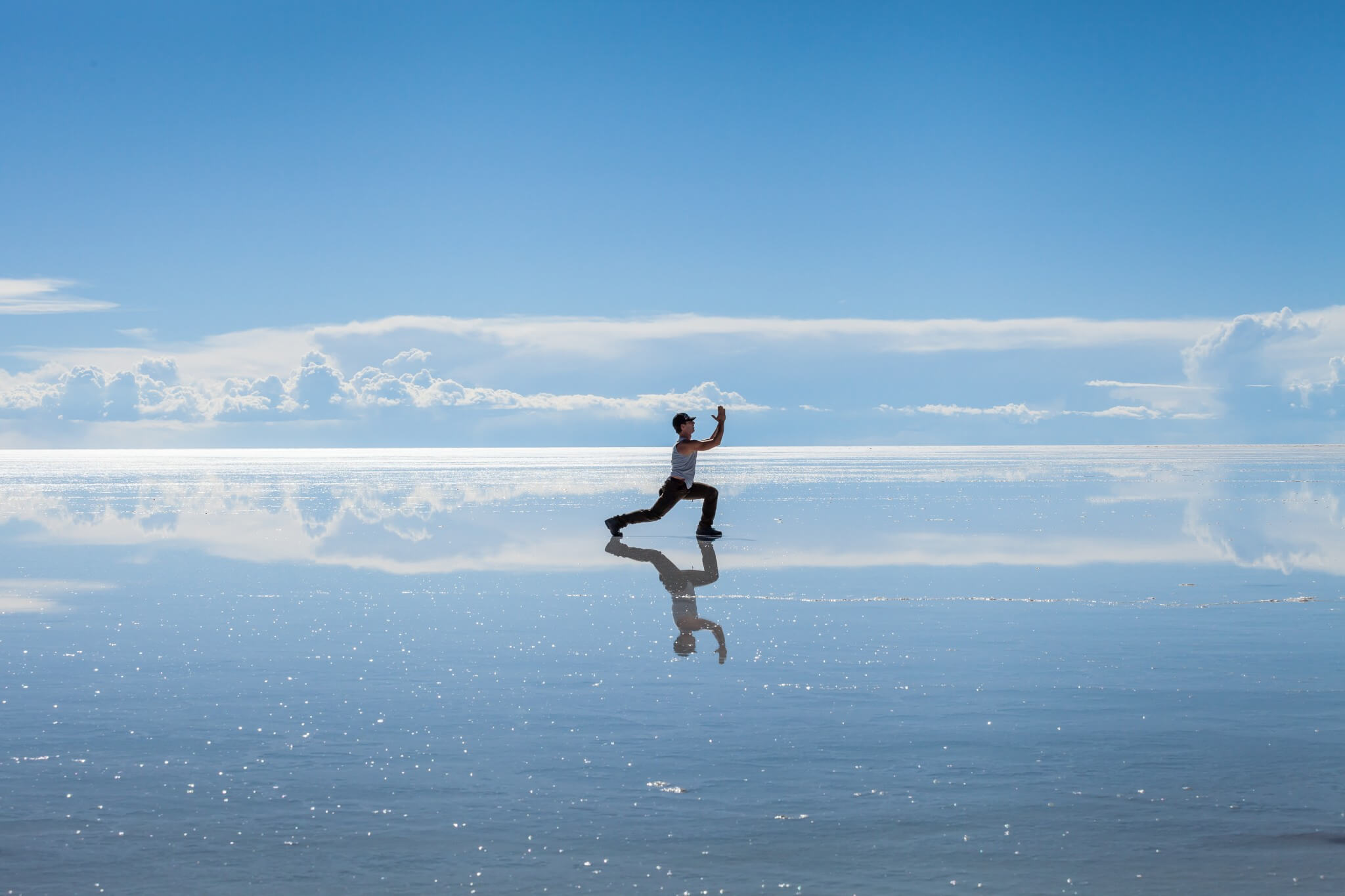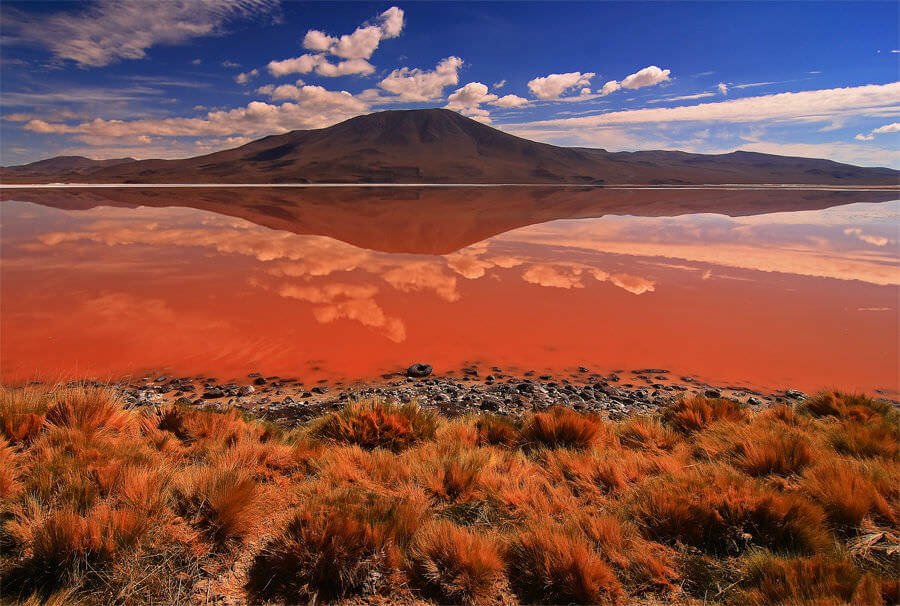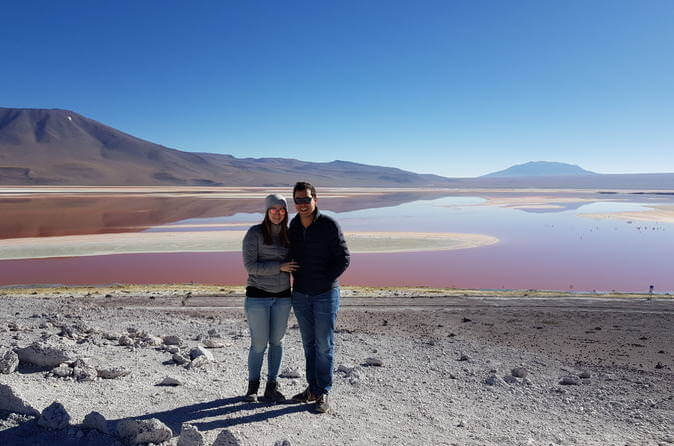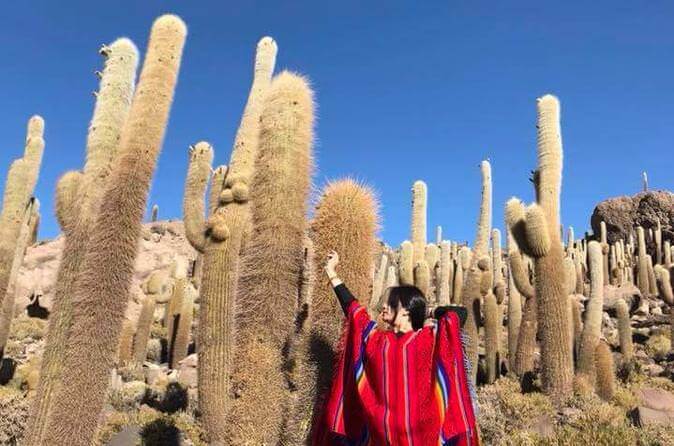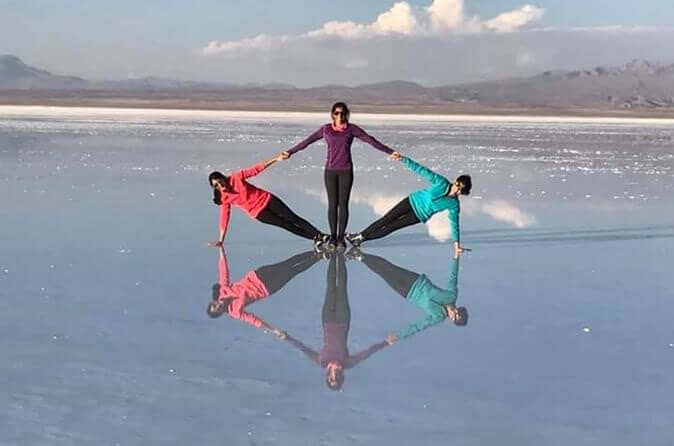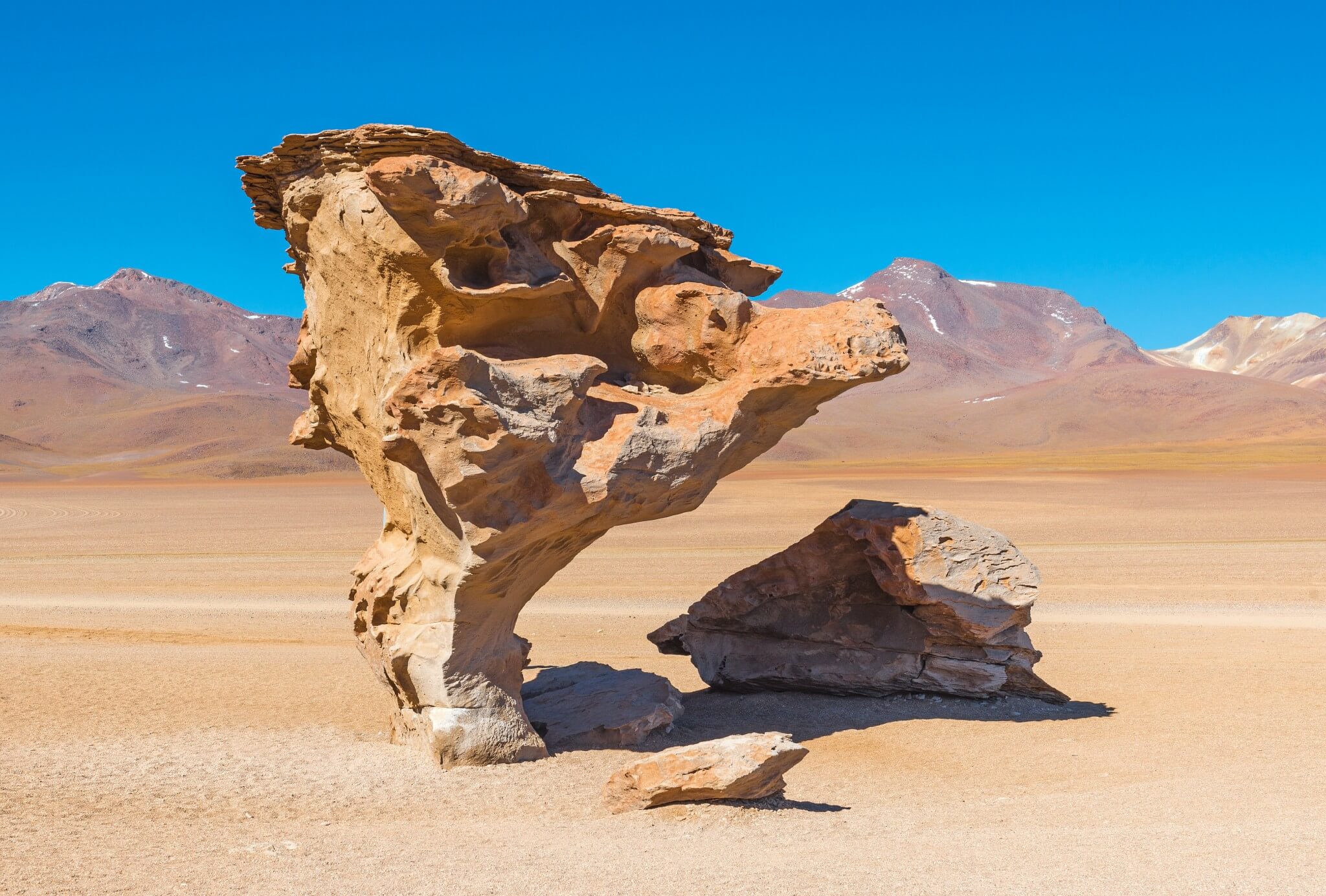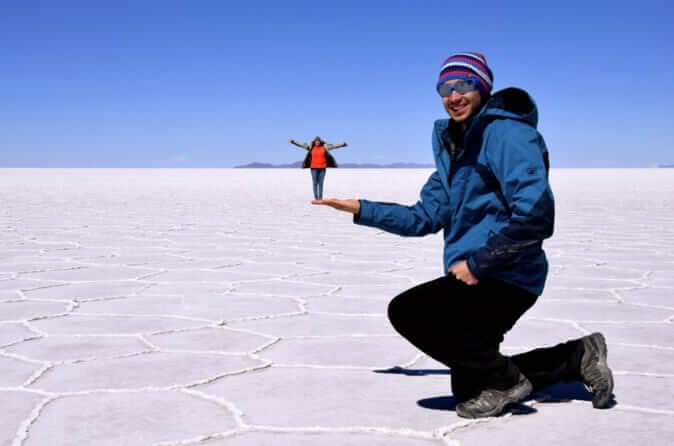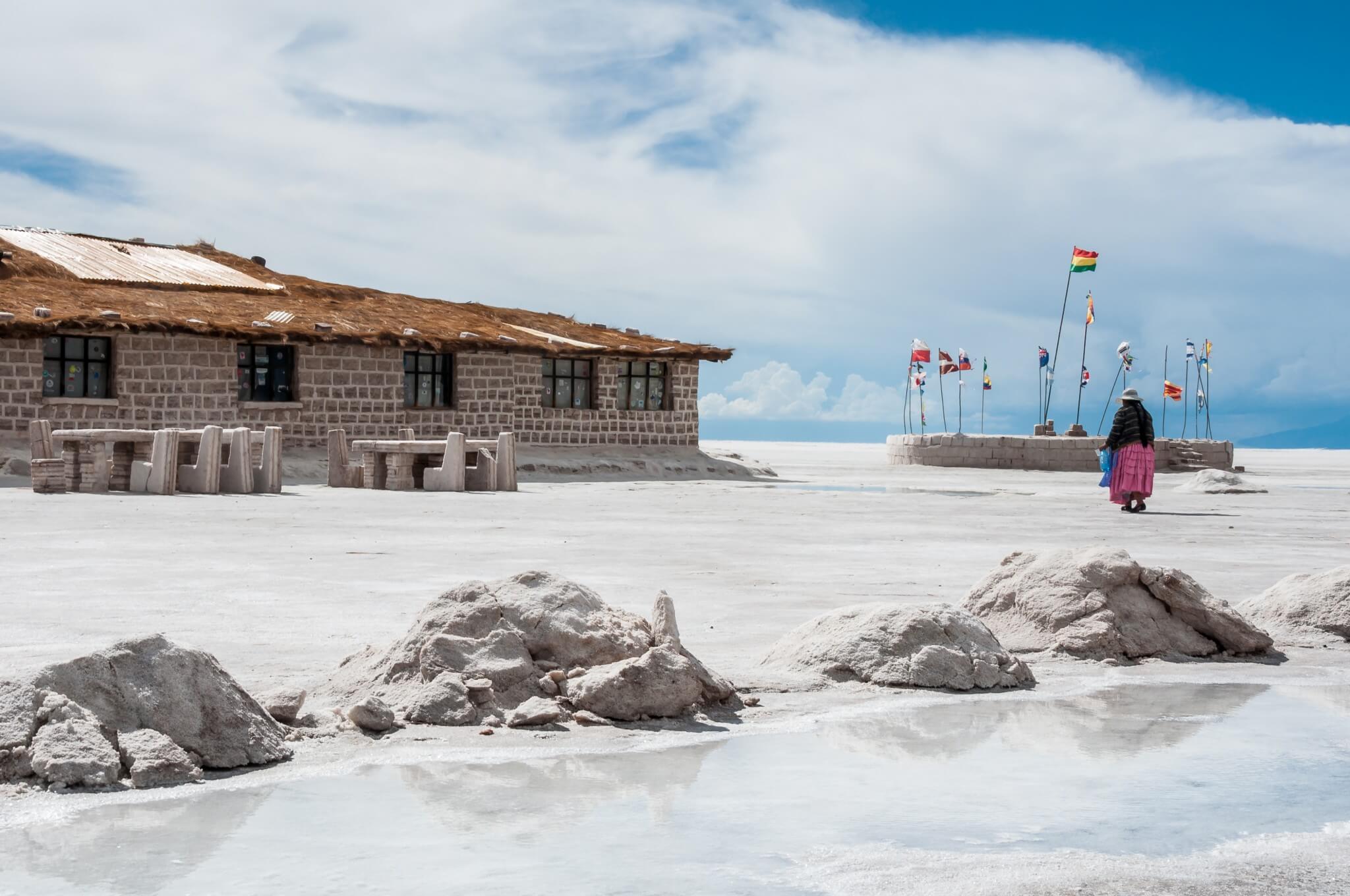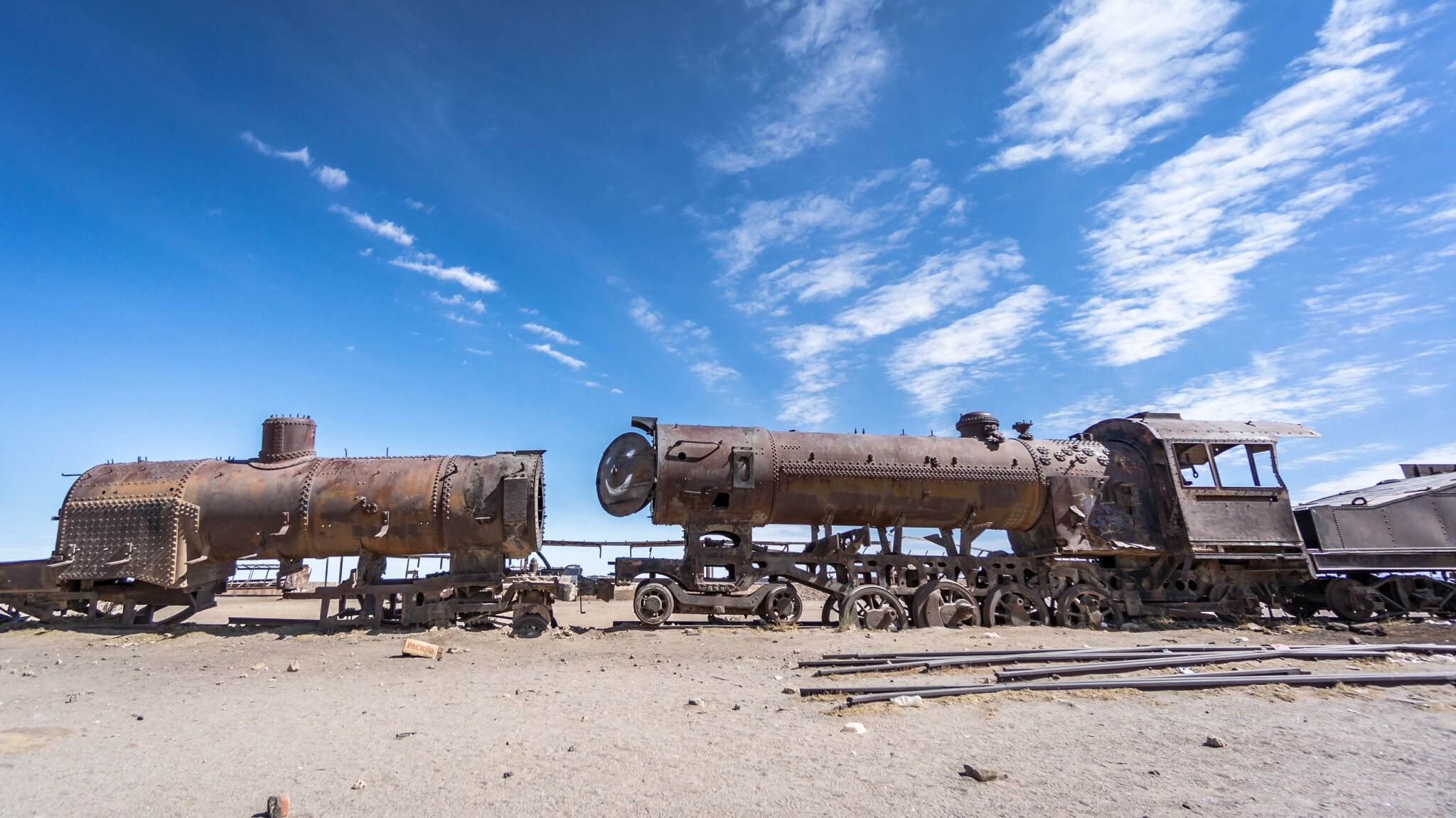Long before knowing exactly what it is, pictures of Bolivia's heavenly salt flats suck a gasp right out of anyone. The largest salt flats on earth, the Salar de Uyuni spans over 10.5 kilometres (4,000+miles). In the wet season, a layer of rainwater creates a mirror-like surface as smooth as glass. In the dry season, its geometric salt patterns imprint the earth, seemingly stretching beyond the horizon. Put simply, this place looks like a whole other planet.
Without a doubt, visiting the Salar de Uyuni is truly a once in a lifetime travel experience (or in my case, twice). In fact, I place Bolivia's salt flats in my top five travel experiences ever – and that's after 5+ years of globetrotting. Having visited the Salar de Uyuni in both the rainy and the dry season, I'm going to tell you exactly how to see this majestic place. Here's how to visit Bolivia's salt flats!
Salar de Uyuni: The essentials
The Salar de Uyuni is located in Bolivia's Altiplano. Despite being remotely located, visiting the salt flats is feasible thanks to the abundance of tours that operate here. Visits can be done as a day trip or a multi-day tour, with lengthier tours venturing further into the remote landscapes up to the Chilean border. You can browse tours along with reviews on GetYourGuide, all of which offer free cancellation.
Know before you go
Like much of Bolivia, the salt flats are highly elevated, positioned at 12,000 feet (3,660 meters) above sea level. Altitude sickness is not uncommon for travellers. Give yourself a few days to acclimatize, stay well hydrated, and follow the locals suggestion and drink coca tea.
While daytime temperatures can be warm and sunny, the nights here are cold, sometimes reaching sub-zero temps. Bring layers and prepare for chilly nights. For daytime, pack sunscreen and sunglasses for the intense brightness of the flats. Be sure to charge up your camera – you'll find yourself constantly wanting to snap pictures of this incredible place.
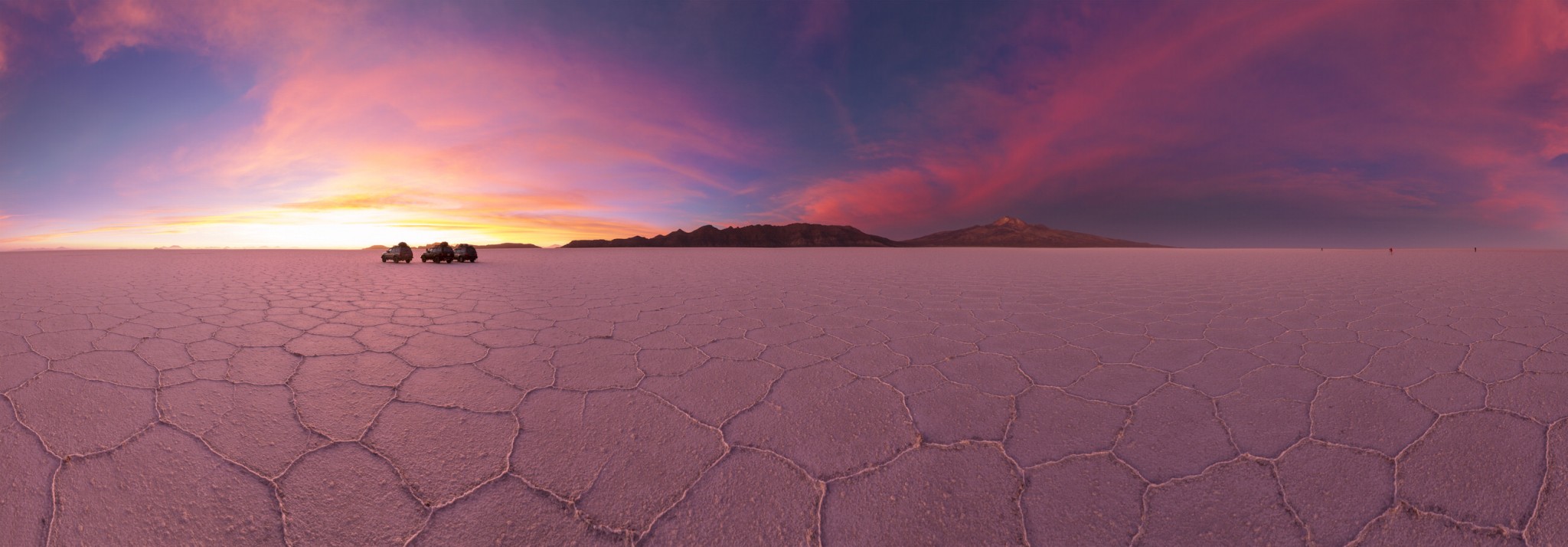
Getting There
Bolivia is a landlocked nation with La Paz being its third largest city. If arriving in Bolivia via another country, you will most likely fly into La Paz first. Uyuni however, is the closest city to the Salar de Uyuni, and is the starting point for most journeys to the salt flats. You can reach Uyuni by plane, train, or bus. You can also begin your salt flats tour directly from La Paz, Tupiza, or Sucre (more on these tour options later).
Bus travel
Bus tickets can be booked online or bought in person in your respective starting city. In general, most major cities in Bolivia offer bus routes to Uyuni, though they are not always direct. You can book online at Tickets Bolivia for some of the most popular routes.
Ticket pricing varies on the distance travelled and bus type/class. Some buses include toilets, heating, snacks, fully-reclining seats (“full cama”), or half-reclining seats (“semi cama”). Buses without toilets do make pitstops. Bus companies have varying reputations, with some notoriously worse than others. It is worth paying for a better bus line that has good reviews from travellers (check TripAdvisor forums and reviews).
How to get to Uyuni from La Paz
From La Paz you can reach Uyuni by flight, train, or bus. The train option involves a bus to Oruro, then a transfer to a train. Information on scheduling and how to obtain tickets is provided below.
If you want to start a tour directly from La Paz to the Uyuni salt flats, you can browse tours with reviews and book online with immediate confirmation on Viator and GetYourGuide. Otherwise, you'll want to take a bus, train or flight to Uyuni first and depart on your tour from there.
Flight scheduling & prices
There are daily local flights from La Paz to Uyuni. I've done both the flight and the bus option from La Paz to reach Uyuni. Flying is more comfortable and quicker, though bussing is cheaper.
Airline Amazonas and Boliviano de Aviacion are the main airlines that fly between La Paz and Uyuni. Airline Amazonas operates flights daily from La Paz to Uyuni departing at 7:15AM (arriving 8:00AM) and 7:30PM (arriving 8:15PM). Prices start around $115+ USD. Boliviano de Aviacion operates flights daily from La Paz to Uyuni departing at 8:05AM (arrive 9:05AM) and 7:10PM (arrive 8:10PM). Prices start around $170+ USD.
Pricing fluctuates greatly by supply and demand. It's generally recommended to book in advance to secure a good price, as this route is fairly limited.
When booking, give yourself wiggle room between your tour start time and your flight. If possible, fly into Uyuni the night before to be safe, or take an early morning flight. Flight delays and cancellations are not uncommon.
To book the cheapest flight price, we recommend selecting “Whole Month” in Skyscanner to visualize the cheapest dates to fly. Be sure to also check our flight hacks here and our guide to South American budget airlines and flight passes.
Bus tickets
To buy a bus ticket, book online or visit the bus station in La Paz on Uruguay Avenue. Both daytime and overnight buses depart from La Paz to Uyuni, which are ~10.5 hours (we did the overnight bus on our first trip). It is a typical South American bus experience in that it's a bit cramped and long, but not unbearable, and eliminates accommodation costs for one night.
Buses operate daily from La Paz to Uyuni, except during holidays or transit strikes (more on that below). Day time trips depart at 8:30AM and arrive in Uyuni at 9:20PM. Overnight buses generally depart around 8 or 9:00PM and arrive in Uyuni between 6-7:30AM the next day. Some routes are direct while others make transfers in Oruro or Potosi. Prices range from $14-$36 USD. All tourists must also pay a terminal tax (30 US cents) inside the bus terminal.
A note on buses: transit strikes and holidays (such as Christmas, Easter, and Carnaval) can result in bus station closures. Plan accordingly and when in doubt, ask hotel staff if there are anticipated strikes or holidays.
How to get to Uyuni from Oruro
Oruro has daily buses and trains to Uyuni, both of which can be booked online. The train is 7 hours long and departs on Sundays and Wednesdays only. Buses depart daily and involve a transfer via La Paz or Potosi.
How to get to Uyuni from Sucre
From Sucre you can take a bus to Uyuni ($11 USD, 8-9 hours, book online) and begin your tour in Uyuni. Alternatively, you can book a one day trip to the salt flats, which returns back to Sucre ($150 USD).
How to get to Uyuni from Tupiza
If departing your salt flats tour from Tupiza, you can get there from La Paz or other major cities, though not directly. From La Paz, for instance, you must take a bus to Sucre or Oruro first, then bus or train onwards to Tupiza.
Buses from La Paz run daily to Oruro ($3.65 USD, ~4 hours, book online) and Sucre ($26 USD, 12 hours direct, book online). You must then transfer onwards from either of these cities to Tupiza. Most of these routes run daily. Tours starting in Tupiza can be booked online.
Where to Stay
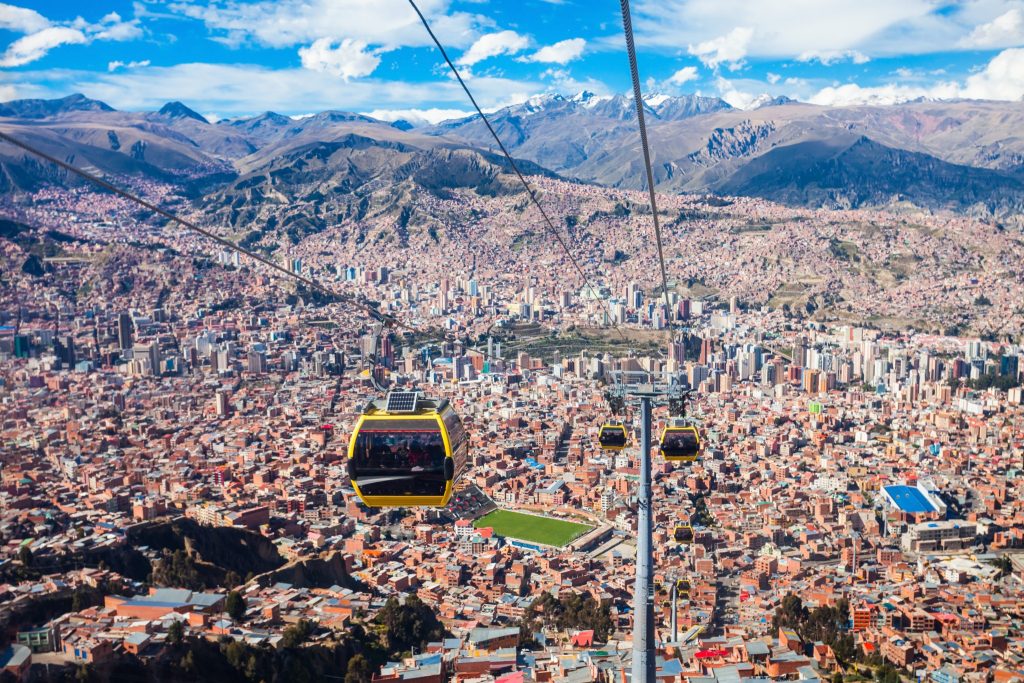
La Paz
La Paz is a stimulating city that is cradled by snow-capped mountains. It is packed with vibrant markets, colourful colonial buildings, and plenty of activities. A visit here should include the city cable car, the colourful Valle de la Luna, the cholitas wrestling show (bizarre and truly unique!), and the world's most dangerous bike tour if you're feeling daring.
Due to Bolivia being the poorest nation in South America, your dollar will go quite far here. A private hotel room will set you back ~$23+ USD/night, while hostel dorms start at as little as $8+ USD per night. Some neighbourhoods in La Paz are noticeably safer than others. Check hotel reviews for visitor input on a hotel's location and neighbourhood vibes.
Sol Andino Hostal
On my last visit to La Paz, I stayed at Sol Andino Hostal in the city. For $41 USD/night, my friend and I had a private room with an ensuite bathroom (you can get cheaper but we chose to treat ourselves to decent digs). Sol Andino is clean, includes a decent breakfast, is centrally located, and has helpful staff. The front desk is open 24-hours, so if you need to leave for an early flight for Uyuni (as we did), this is ideal for getting help ordering a taxi (which should be phoned, not flagged down in the street).
Location: Aroma #6 zona Rosario, Downtown La Paz, 9999
Price: $36+ USD per night (compare prices across booking sites)
Residencial Latino
We stayed at the Residencial Latino on our first visit to La Paz. It has a bright courtyard, simple breakfast (included), helpful desk staff, and is also a good location for exploring the city. This is a cheaper downtown option that still has all the basics plus useful desk staff.
Location: Calle Junin n. 857, 9999 La Paz, Bolivia
Price: Prices start at $17 USD/night (single room with shared bathroom), up to $58 USD/night for a triple room with an ensuite. (compare prices across booking sites)
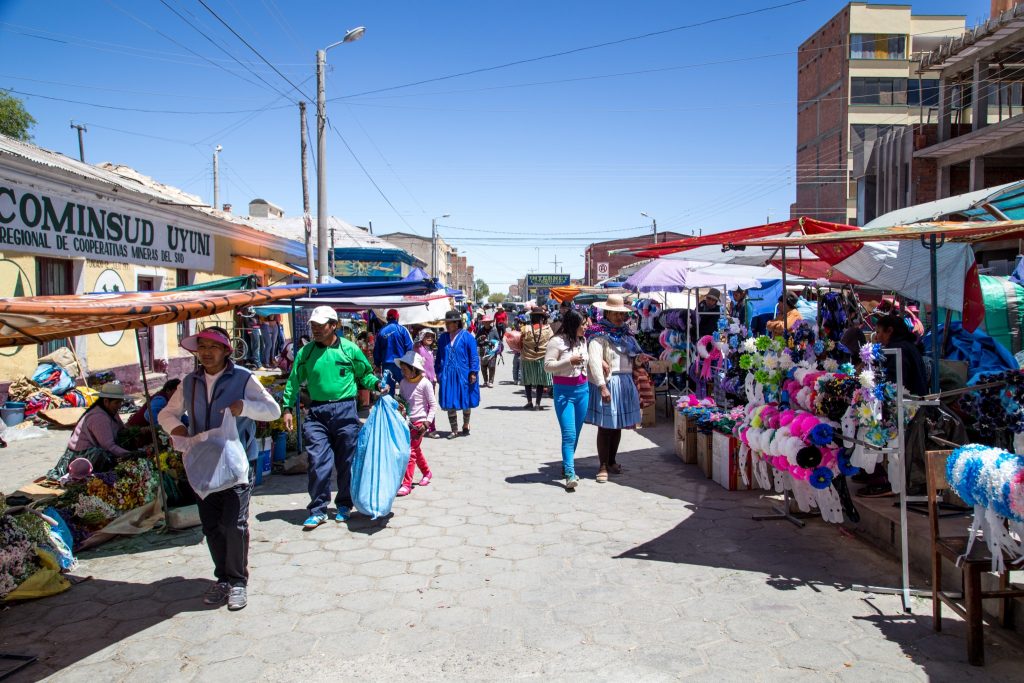
Uyuni
Uyuni is a small city located in the southwest of Bolivia. It's the closest starting point for a trip to the Salar de Uyuni. There are a few attractions including a street market, a small archeologic museum, and the nearby train cemetery. To avoid rushing on arrival, it's not a bad idea to spend a day or two in Uyuni before taking off for your tour if departing from here.
Hostal Castillo de Liliana
We stayed overnight at the Hostal Castillo de Liliana on our first visit to the salt flats (the second time we booked a flight from La Paz and departed on the same day). This hostel is simple, clean, cheap, and has a hearty breakfast. Uyuni is a small town, so most accommodations are “central”, including Liliana. It is possible to stay in fancier digs, including one of the nearby salt hotels, but for us this was a perfect budget option. If your wallet can't afford the overnight stay at a salt hotel, you can at least have dinner there.
Location: Av Colon entre Bolivar y Avaroa No 148, Uyuni, Bolivia
Price: $18+ USD/night for a single room with a private bathroom
Oruro, Sucre, and Tupiza
We haven't personally departed to Uyuni from these cities, so we don't have firsthand recommendations for hotels and hostels here. That said, if you search on HotelsCombined, you will see a huge number of accommodation options across all major booking sites, so you can easily see the best prices and reviews all from one website.
Okay, now that you've got the basics, here's the rest of the steps you need to know on how to plan a trip to Bolivia's Salar de Uyuni!
How to visit the Salar de Uyuni
1. Choose the best time to go to the Salar de Uyuni
Before booking a tour, you need to decide which time of year you want to visit. What is considered the best time to visit the Salar de Uyuni really depends on what you want to see, as each season offers different visuals. One thing's for certain – the scenery here is breathtaking all year round.
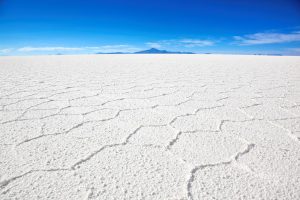
Dry Season (May to October)
- Salt flats have dry, geometric shapes spanning for miles
- Shorter but sunnier days and generally better road conditions
- Access to Cactus Island (Isla Incahuasi) or Fish Island (Isla del Pescado) is possible. These are two small, hilly islands with tall cacti and rock formations
- Daytime temperatures range from 15 to 27°C (60 – 80ºF)
- Colder nights expected, especially in June and July with temps as low as 0° to – 15° C (32° – 5° F)
- Generally less humid and more pleasant temps in the lowlands
- In August and September, farmers burn-off to clear overgrown forests which can produce a thick smoke in the area
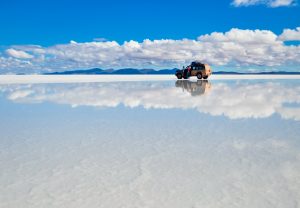
Rainy Season (November to March)
- A few centimetres to several inches of rain creates an incredibly perfect mirror-like surface stretching into the horizon
- Daytime temps range from 15 to 27°C (60 – 80ºF), with cooler temps at night. The east is warm and humid, the west is dryer, and the south is milder
- Access to Cactus Island ( Isla Incahuasi) and Fish Island (Isla del Pescado) is not possible due to water levels
- Days are cloudier and roads are muddier
- Countryside is greener and full of native plants and flowers
- Certain times of the rainy season generally get less tourists
2. Pick a tour duration
Salt flats tours are run as a one day or multi-day visits. Single day trips typically visit the salt flats, salt hotel, and train cemetery. Multi-day tours include this, plus travel further through Bolivia's landscapes, including highlights like Laguna Colorada and the Salvador Dali Desert.
Multi-day tours are highly recommended, as the landscapes and wildlife in this region are outstanding. Desert dunes, apple-red and neon turquoise lakes, wild flamingoes, volcanoes, hot springs, and adorable llamas are just some of what's to be seen. In my opinion, if you're already in this corner of the world, you'd be remiss not to see more of Bolivia's astounding scenery.
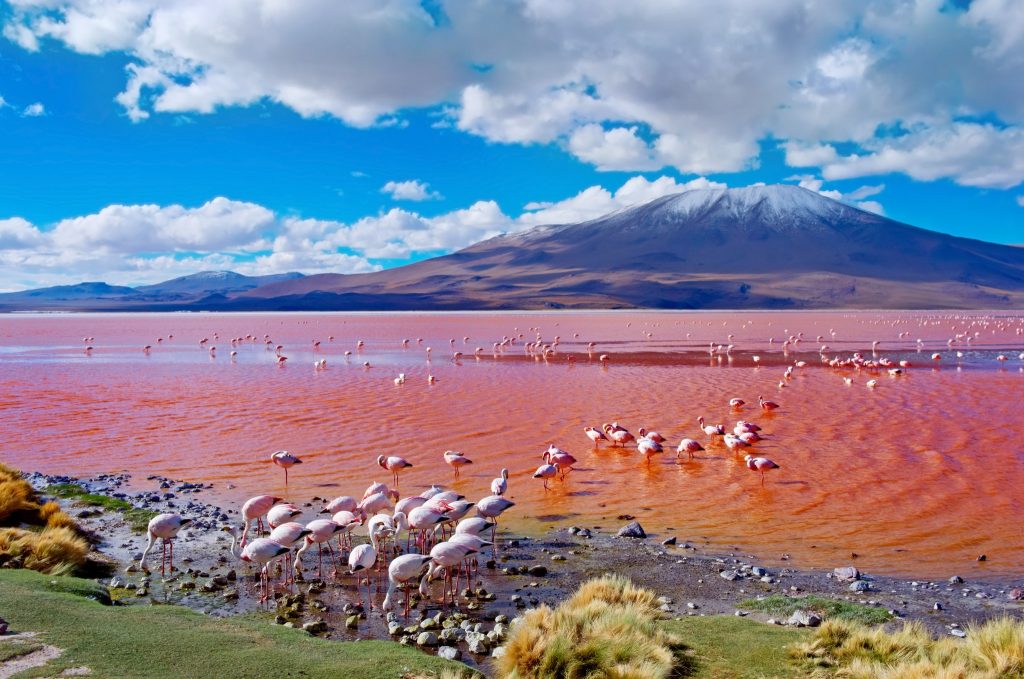
Both day and multi-day tours to the salt flats are round-trip from their departure point. However, most of the multi-day tours that end near the Chilean border allow passengers to connect onwards to San Pedro de Atacama, Chile by bus. I've done this on both my visits, and it's a great way to reduce transport costs between countries (plus Atacama is definitely worth visiting). If you wish to transfer onwards to Chile, be sure to arrange this with the tour company beforehand.
3. Choose a tour departure point & budget
Most tours operate directly out of Uyuni, though tours can be arranged from La Paz, Sucre, and Tupiza. Uyuni is the cheapest departure point for visiting the salt flats, with day tours being the least expensive option.
Tour prices vary based on tour group size, duration, company reputation, vehicle quality, and accommodation standards. While larger tour groups are cheaper, one disadvantage is that you must always wait for all of your group's vehicles. This can cause significant delays if a car in your group breaks down. Accommodation also greatly affects tour cost, with pricing varying based on whether you choose basic (dormitory style hostels), mid-range (heated private room hotels), or high-end digs (such as the salt hotels).
Tours from Uyuni
Uyuni has the most variety of tours, including one day, three day, and four day trips. Day tours are abundant, including sunrise tours with breakfast, stargazing tours (highly recommended in the wet season as the star reflect on the ground water), sunset tours with wine, bike tours, and more. Day tours start from $75 USD, multi-day tours start from $149 USD.
One Day
Uyuni Salt Flats Full Day Tour ($109 USD)
This tour is operated by Red Planet Expeditions. We used this company for our tour and highly recommend them!
Three Day
The main difference between these 3-day tours is the accommodation. The first 2 tours are in basic hostels with dormitory style sleeping, while the last tour gives you private rooms in heated hotels.
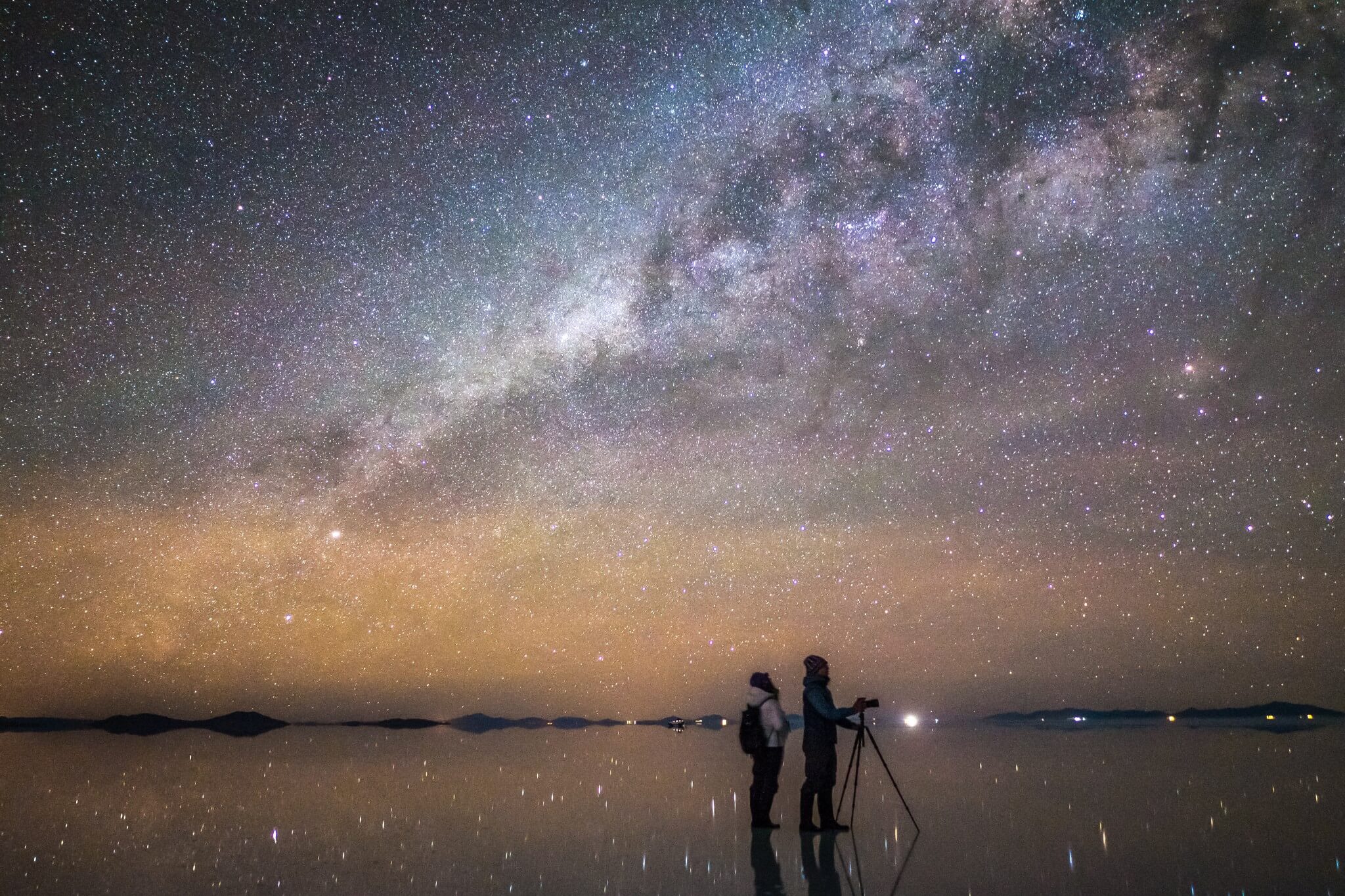
Tours from La Paz
Day tours can be done from La Paz with flights or buses included (starting at $200 USD). Two day tours with flights start at $. Both of these options are quite packed and pricey. Tours from La Paz tend to include a visit to the salt flats, salt hotel, and train cemetery.
One Day (Bus or Flight)
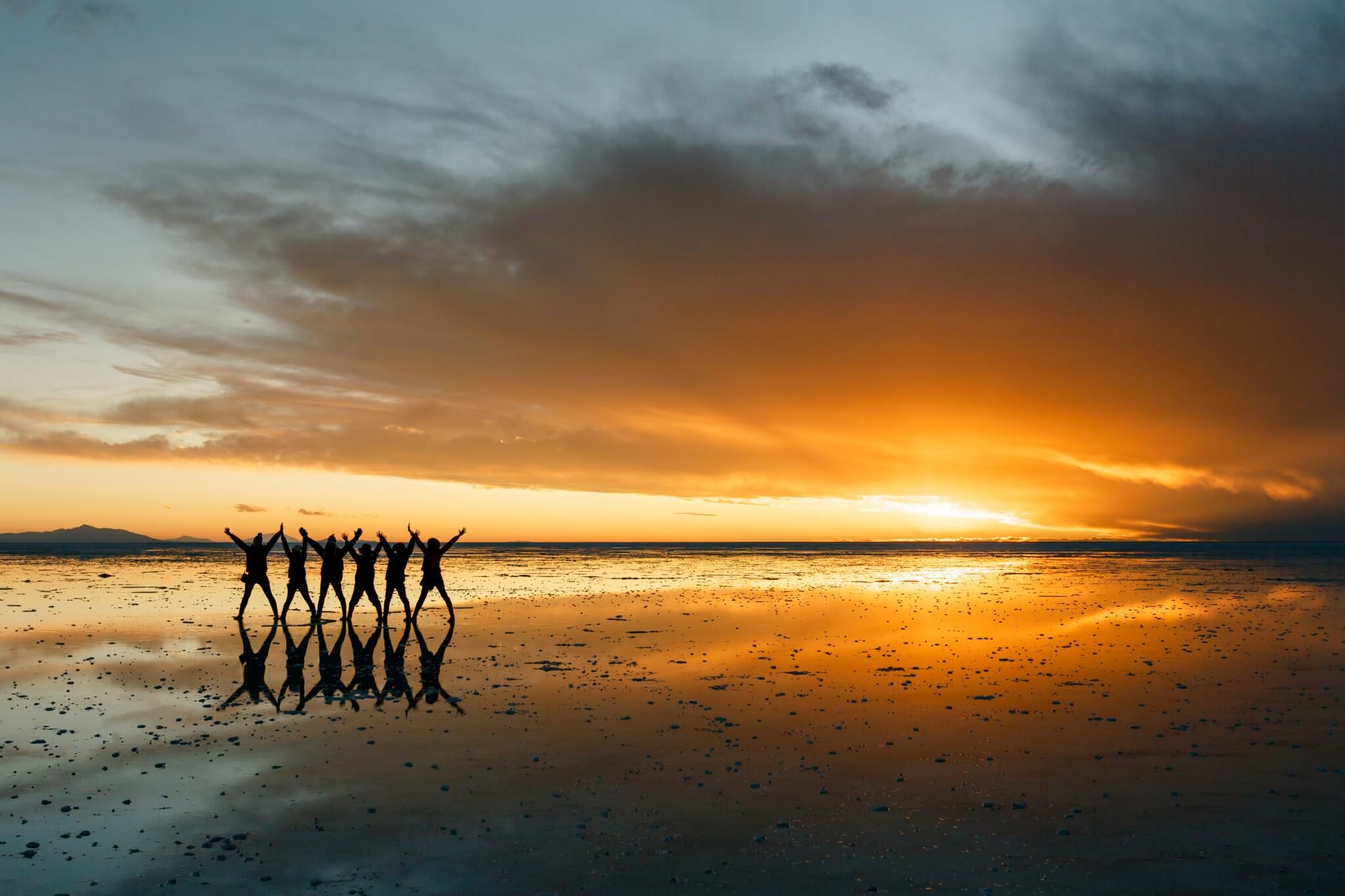
Two Day (Flight)
2-Day Uyuni Salt Flat with Overnight in Hotel VIP Including Flight from La Paz ($890 USD)
Four Day (Bus): La Paz > Uyuni > Atacama
4 Day Uyuni Salt Flats from La Paz to Atacama in Chile ($438 USD)
If travelling through South America, this is a great way to get a tour, accommodation, and transportation all in one package. The Atacama Desert in Chile is well worth a visit, and is a good departure point for heading further south in Chile towards Santiago.
Tours from Sucre
A less common approach is to visit the salt flats from Sucre as a round-trip. Disclaimer: this is a packed trip. It involves an overnight bus from Sucre to Uyuni and visit the salt flats, salt hotel, and train cemetery the following day. At the end of the day tour you then take another overnight bus returning back to Sucre the next morning.
Tours from Tupiza
Visiting the Salar de Uyuni on a tour from Tupiza is the most off-the-beaten track approach. Far less tourists pass through Tupiza, and the actual tour route is different since it starts from the south. There are four-day tours here that pass through the typical highlights of the multi-day tours from Uyuni, only in the reverse order.
3. Choose a reputable tour company
Not all tour companies here are created equal. Some run substandard trips, with poor accommodation and vehicles that are prone to breakdowns. It's wise to book with companies that have recent positive traveller reviews. If booking with Viator or GetYourGuide, there are reviews of each tour available. Otherwise, TripAdvisor is a great hub for this, as are its discussion forums.
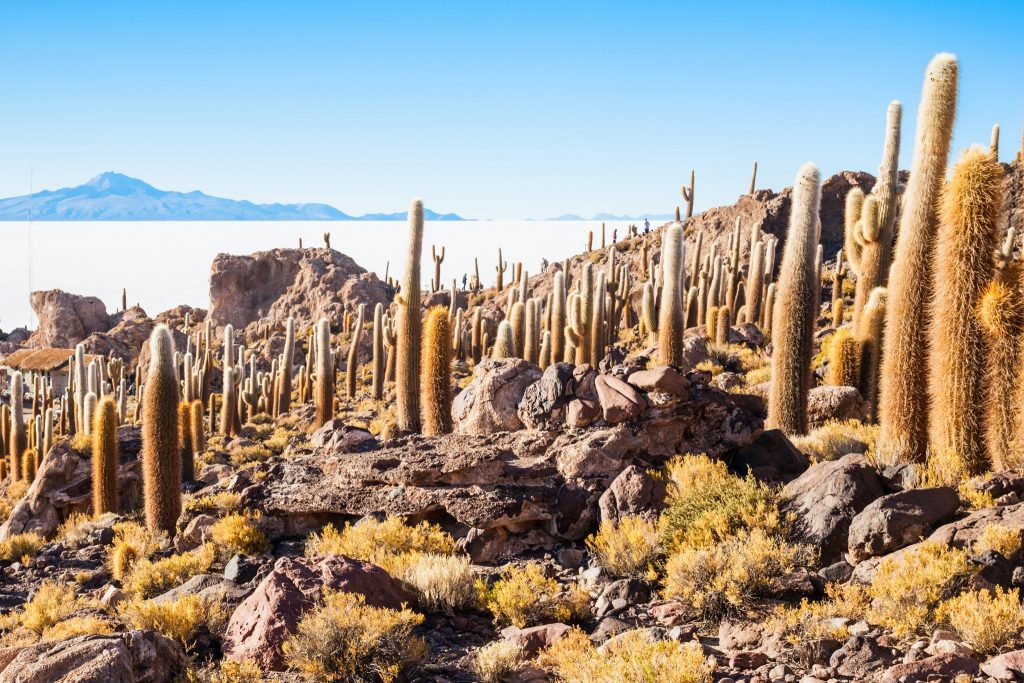
Isla del Pescado (Fish Island)
4. Know what's included in your tour
Day tours generally visit the same sites – the salt flats, salt hotel, and the train cemetery. That being said, there are variations, so be sure to understand what's included. This cannot be stressed enough for multi-day tours, where accommodation, food standards, and tour highlights vary hugely from one package to the next. Traveller reviews (e.g. TripAdvisor) are good for this, plus clarifying with the company itself.
An important note on language – some tours provide Spanish speaking guides only. Verify whether you will be provided with an English-speaking guide, and whether it's one guide per group or per vehicle (and if this matters to you). Personally, I've been on tours with one main guide and two vehicles. The guide took turns riding in our vehicles and I didn't mind.
Food & drink
Check beforehand which meals are included in your trip. Alcohol and snacks are typically not included in tours, so be sure to pack some as you'll generally be unable to buy these along the way. If you have dietary restrictions or allergies, sort this before your tour.
Accommodation
Know what to expect for your accommodation by asking in advance. Cheaper tours typically provide more basic accommodation. If you want more luxurious digs, such a staying in the salt hotels (pictured below), this will cost more. Ask before booking.
Tour highlights
Each tour covers different scenic highlights, though many are generally included in every trip. For instance, most multi-day tours include a visit to Cactus Island in dry season, as well as Laguna Colorada, Tunupa Volcano, Laguna Verde, and the Colchini salt processing mine. If there are specific highlights you want to see, such as the Coquesa mummy caves, check whether that's covered in your package before reserving.


5. Book your tour
Tours can be booked online or in person in your respective departure city. While it can be cheaper to book in person, if there's a particular company and dates you're after, it's safer to book ahead to avoid disappointment. The more reputable companies book out in high season.
6. Pack appropriately
There are a few must-pack items for any visit to the Salar de Uyuni. Generally, tour companies will tell you what to bring, but we've included packing lists for the respective tour types below.
You may wish to research photo ideas beforehand, and decide on any props you may wish to bring. The ever-stretching flats provide creative opportunities for photos, and it's not a bad idea to do some Googling for inspiration.
Day trip
- Sunglasses
- Sunscreen
- Layers of clothing
- Hat
- Camera
- Any props you may wish to use for photos
- Water
Multi-Day trip
- Everything needed for day trip plus…..
- LOTS more layers for nighttime (e.g. light gloves, leg warmers, warm hat, scarf)
- Alcohol if you wish to drink (you will not be able to buy on the way)
- Snacks (limited to no opportunities to buy along the way)
- Bathing suit & towel (likely visit to hot springs)
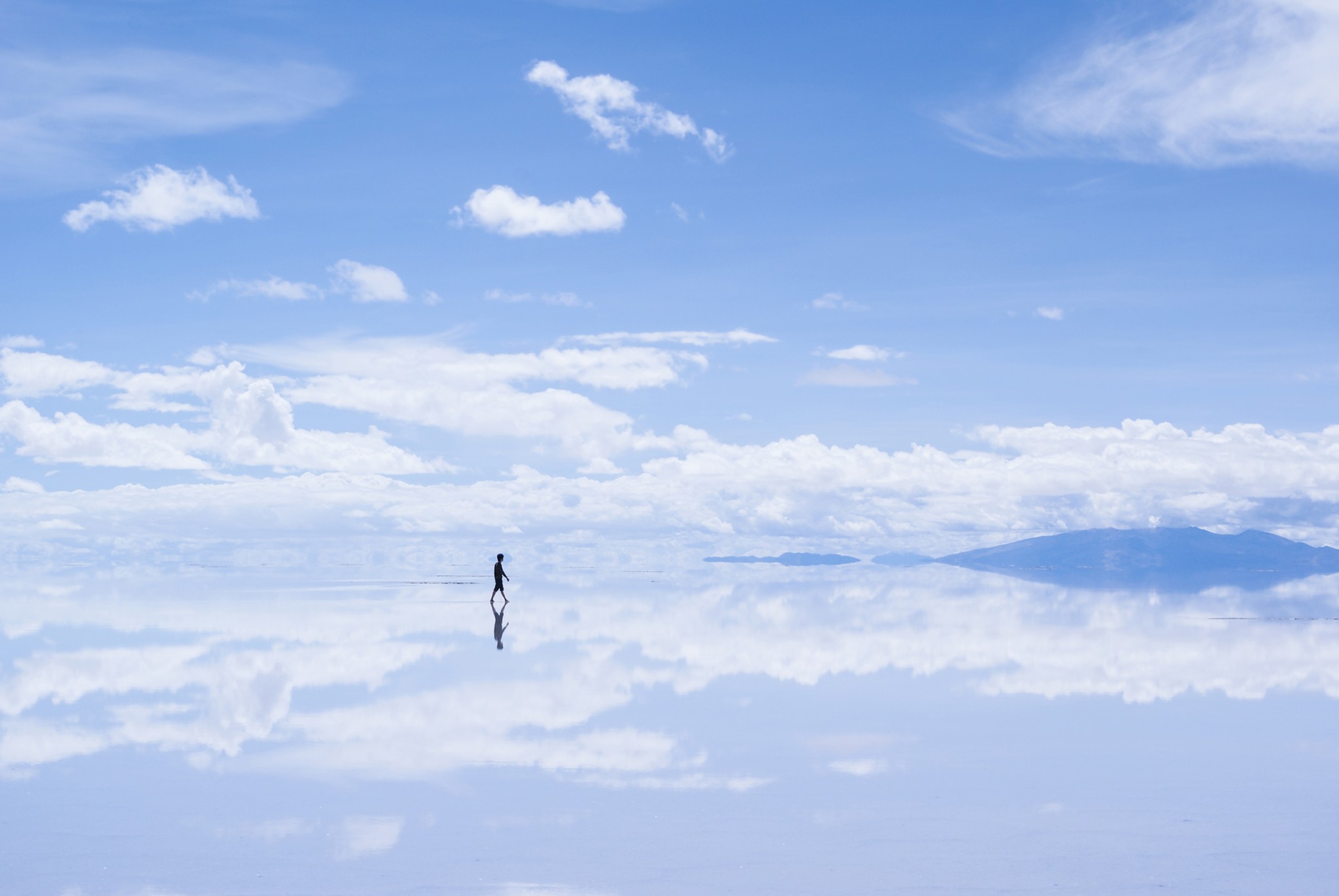
It's hard, if not impossible, to be disappointed by a trip to the Salar de Uyuni. Its otherworldly landscapes, altiplano wildlife, and remoteness are unique and astounding. If your bucket list has room for updating, I'd strongly recommend adding the salt flats!
The Thrifty Gist
- The Salar de Uyuni can be visited as one day or multi-day trip from Uyuni, La Paz, Tupiza, or Sucre
- Day tours are cheapest, but only include a visit to the salt flats themselves and not the rest of Bolivia's remote landscapes
- Most multi-day tours allow passengers to be dropped off at the Chilean border, saving transport costs and allowing travellers to continue onto the Atacama Desert
- Review what is included in your tour package, including meals, accommodation type, group size, and tour highlights to avoid disappointment3


